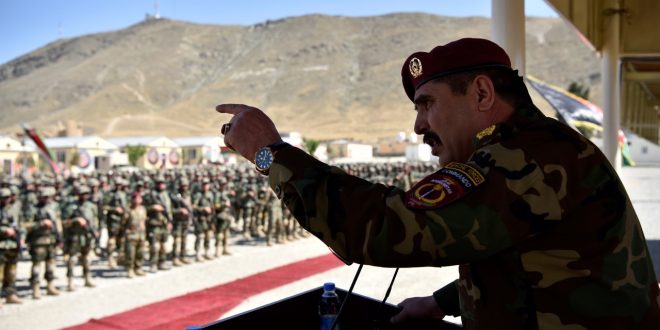Did Taliban Infiltrate Afghan Evacuees to the US? VOA Akmal Dawi
Among thousands of Afghans flown to the United States in the chaotic evacuation from Kabul last August, some 50 have been flagged for “potentially significant security concerns.” U.S. officials have not ruled out the possibility that they could include members of the Taliban that now rules Afghanistan.
A report last month by the Department of Defense’s inspector general concluded that “U.S. agencies did not use all available data when vetting Afghan evacuees” and that “the United States faces potential security risks” if certain Afghans “are allowed to stay in the country.”
The report has alarmed lawmakers on Capitol Hill.
Earlier this month, Senator Susan Collins, a Maine Republican, noted that fulfilling America’s obligation to Afghans “does not require compromising a thorough, comprehensive vetting process for those Afghans who managed to get on airplanes before the last U.S. aircraft left the runway [in Kabul].”
Collins spoke at a hearing in which she pressed Defense Intelligence Director Scott Berrier on the whereabouts of “at least 50 individuals with security concerns.”
Berrier responded that he did not know but would “get back to” the senator.
Officials at the Department of Homeland Security (DHS), which oversees the Immigration and Customs Enforcement agency, did not respond to several VOA queries about the status and whereabouts of the 50 Afghan evacuees in question.
The State Department, which helped coordinate the evacuation of more than 124,000 Afghans last year, said improvements were continuously made to the Afghan resettlement program.SEE ALSO:The Massive, Costly Afghan Evacuation in Numbers
“We will continue to use every tool to prevent those who might pose threats to American communities from entering the United States,” said a spokesperson for the State Department.
Last year, several hundred Afghan evacuees were held at transition centers outside the U.S. for additional security screening and vetting, DHS said in a report in January. The report also said that evacuees were undergoing “multi-layered and rigorous screening and vetting process” conducted by counterterrorism, intelligence and law enforcement agencies.
However, in the first weeks of the evacuation program, officially called Operation Allies Welcome, evacuees were not screened against all Pentagon databases, particularly military intelligence databases, according to the DoD’s inspector general report.
Afghan databases
What the IG report terms “derogatory information” about the 50 evacuees was discovered after the biometrics of more than 58,000 Afghans were processed in multiple defense and intelligence databases.
In some cases, individuals were flagged “whose latent fingerprints have been found on improvised explosive devices and known or suspected terrorists,” according to the report.
U.S. military and intelligence agencies maintained various databases of Afghan citizens where they stored biometric data such as fingerprints and iris scans as well as names and other personal identifying information, according to Jonathan Schroden, a former U.S. military operation analyst.
Schroden said that data was also collected from battlefields, such as fingerprints on remnants of explosive devices and vehicles used by the enemy combatants.
While the true identity and biometric information of the 50 Afghan evacuees remain confidential, could members of the Taliban be among them?
“I wouldn’t discount it,” Schroden told VOA, adding that during the chaotic first days of the evacuation, undesirable individuals could have slipped through airport gates and boarded U.S. military planes ferrying Afghan refugees to safety.
Determining the security risks the individuals might pose is exceedingly challenging, according to Schroden.
“It could range from relatively negligible to, one could imagine, a deliberate infiltration attempt with the intent of conducting some type of actual terrorist attack on U.S. soil and everything in between,” he said.
Xenophobia?
Immigrant advocates fret that unwarranted suspicions are being raised about Afghans more generally, noting that all evacuees have been subjected to a rigorous vetting process.
“The reality is that concerns around security are raised by those who use xenophobia to keep immigrants out of the country. If anything, we are aware of people who are misidentified or excluded without reason,” said Laila Ayub, an immigration attorney and a coordinator with Afghan Network of Advocacy and Resources.
Christopher Purdy, a specialist with Human Rights First, a nonpartisan international human rights organization, said Afghan refugees in the U.S. face multiple challenges.
“Primarily, these revolve around refugee process, the asylum backlog, Special Immigrant Visa requirements and humanitarian parole,” said Purdy, adding that the backlog for Afghan asylum seekers is so long that applicants must wait for up to five years for an immigration hearing.
The Biden administration recently gave Temporary Protected Status (TPS) to thousands of Afghan evacuees who had entered the U.S. as of March 15. Under the TPS, Afghan evacuees will be shielded from deportation for 18 months and allowed to work legally in the U.S. while their asylum claims go forward.
Last month, the U.S. government deported an Afghan citizen because of criminal charges, Axios reported.
Senior Diplomatic Correspondent Cindy Saine contributed to this report.
 Soldier of Fortune Magazine The Journal of Professional Adventurers
Soldier of Fortune Magazine The Journal of Professional Adventurers






